How To Jack A Lifted Truck
How to Safely Jack Upward a Truck
Follow these steps to get your truck upwards on jacks and ready to work on.
![]() Complexity
Complexity
Avant-garde
Introduction
Learning to properly jack upward and support your truck earlier y'all start doing your own oil changes or making repairs is vital to your safety. Different vehicles have unlike support points; outset by checking the owner's transmission.
Tools Required
Projection pace-past-step (vi)
Step ane
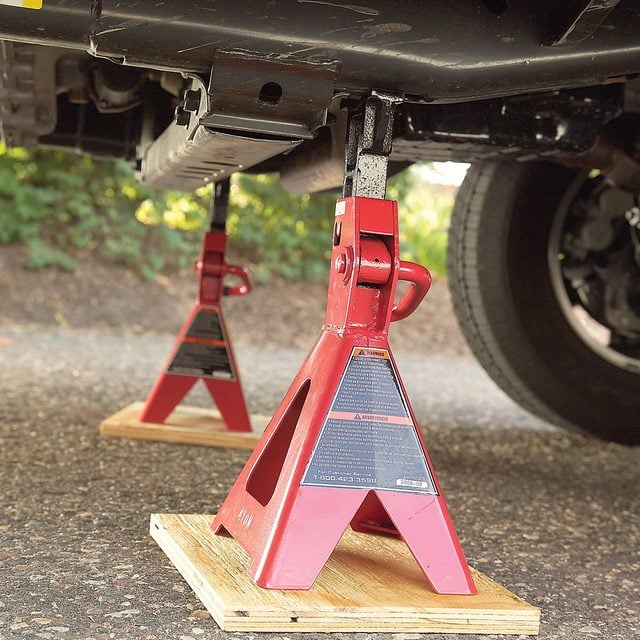
Basic Car Jack Safe
You can save quite a few bucks by knowing how to jack up your truck and doing your ain repairs and maintenance. But if you want to live long enough to spend all the coin y'all relieve, you lot owe information technology to yourself and your loved ones to study upwardly on jack safe.
Step ii
Notice a Apartment Surface
- Start by parking your truck on a flat concrete surface.
- Pro Tip: Identify jack stands on plywood support plates when you're working on an cobblestone surface.
- Trucks and most SUVs take steel frames that support the entire vehicle. Nearly all cars, on the other hand, are of "unibody" construction, meaning they don't have a frame. So each type of vehicle requires different points of support for jack and jack stand up placement.
Stride 3
Consult a Manual Commencement
To learn how to jack upwardly your truck properly, consult a repair manual to locate the recommended lift points and support locations for your specific vehicle. Repair manuals are usually bachelor at auto parts stores or online.
- Before yous begin the jacking process, engage the parking brake and chock the rear wheels to prevent unwanted movement.
- You'll want to first jacking from the forepart of the vehicle. The forepart stop of four-wheel-bulldoze trucks can be raised by placing the jack under the differential.
- Pro tip: For two-bicycle-drive trucks, identify the jack beneath the jacking pad under the engine.
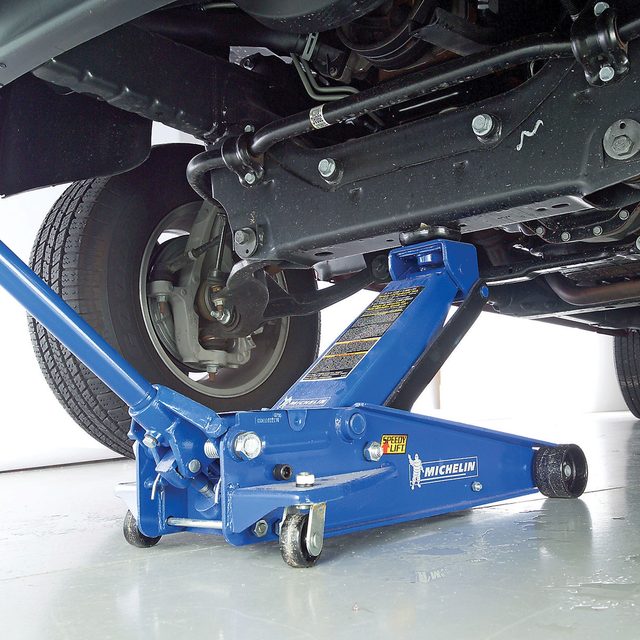
Pace 4
Pumping Upwards the Jack
- Place the jack so the cross member or differential lines upwardly with the recessed area of the jack saddle.
- Slowly pump the jack handle until the front wheels exit the footing, then finish jacking and double-cheque the jack placement.
- Expect at the front of the vehicle to make sure information technology'south not leaning to one side. If information technology is, lower and recenter the jack. Otherwise, continue pumping until the vehicle reaches the desired height.
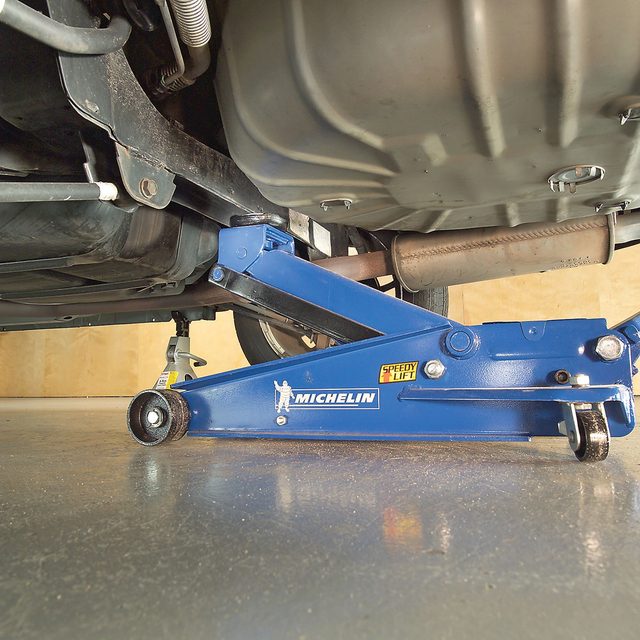
Step 5
Place the Jack Stands
- Support the front of a truck past placing the jack stands directly under the frame. Support the rear of the truck with a jack stand under each axle.
- Turn the handle very slowly until the vehicle starts easing down. A quick-release volition effect in a sudden catastrophic drop.
- Lower the truck until information technology almost touches the saddle of the jack stand. So make terminal alignment adjustments before lowering the total weight onto the stand.
- Remove the floor jack and bring information technology to the rear of the vehicle.
- Locate the recommended rear lift point and repeat the jacking procedure at the rear of the vehicle. Place the two rear jack stands in proper back up locations and lower the rear onto those stands.
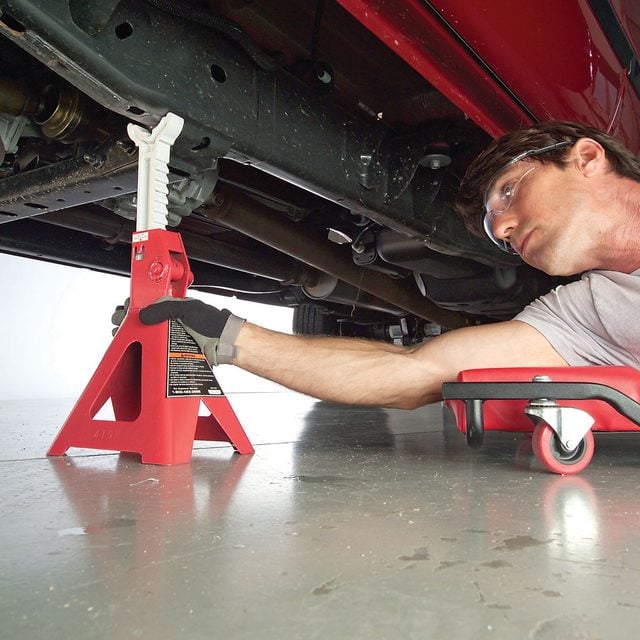
Pace vi
Test the Support Points
- With the vehicle up on all 4 jack stands, gently milkshake the vehicle side to side and upwards and down. This ensures that the vehicle is sitting squarely on the jack stands and that the jack stand up saddles take total contact with the support points.
- If the vehicle wobbles, end immediately and reposition the problem jack stand before crawling under the vehicle.
- Pro Tip: If you programme to remove your tires, loosen the lug nuts slightly while the truck is still on the ground. That'll continue the wheels from spinning while you turn the lug wrench in one case the truck is raised.
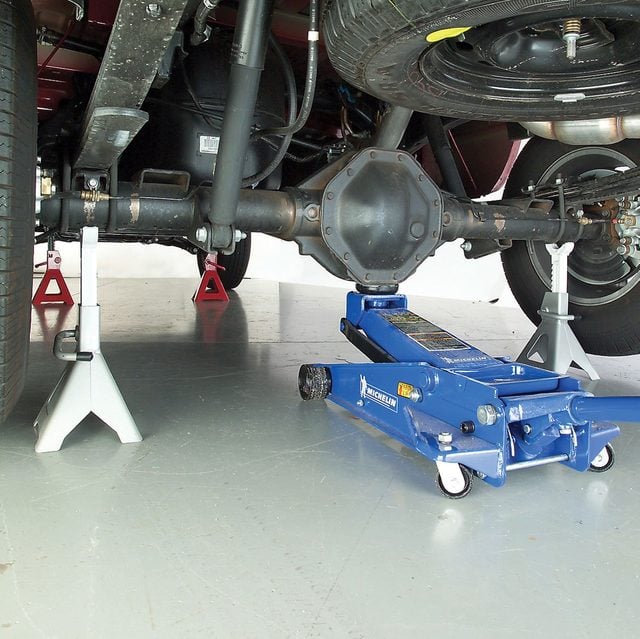
Originally Published: Oct xv, 2019
Source: https://www.familyhandyman.com/project/car-repair-car-jack-safety/

0 Response to "How To Jack A Lifted Truck"
Post a Comment